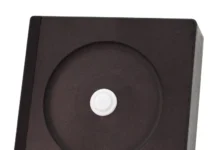A breakthrough in UVC LED technology from Silanna UV, Pinkenba, Australia, offers advantages for applications as diverse as disinfection, water quality monitoring, gas sensing, liquid chromatography, and chemical and biological analysis.
UV’s groundbreaking patented short period superlattice (SPSL) approach overcomes many of the difficulties that plague competing AlGaN UVC LED technologies. Silanna UV has effectively created a new material, a nanostructure. UV-C LED manufacturers have relied on traditional AlGaN (Aluminum Gallium Nitride alloy) formulas. By adjusting the ratio of aluminum and gallium metal in the alloy lattice, the bandgap can be tuned to produce UV emissions from 340 nm to 210 nm. Emission below 260nm requires high Al-content AlGaN, making it very difficult to achieve desirable n and p-type doping leading to poor electrical performance.
High-Al content AlGaN also suffered from light extraction issues due to the polarization of emitted light. Instead of the common AlGaN method, Silanna UV used SPSL. Alternating layers of AlN and GaN are meticulously built up to create a SPSL. SPSL’s key properties can be finely tuned by simply adjusting the thickness of the constituent layers. The SPSL technology gave Silanna UV huge advantages over UVC LED competitors, including the maintenance of high power at shorter wavelengths, superior electrical properties and outstanding lifetime performance.
For more information, visit www.silannauv.com.






